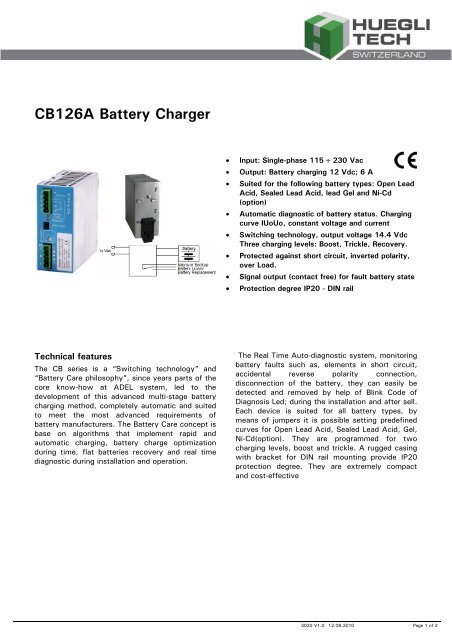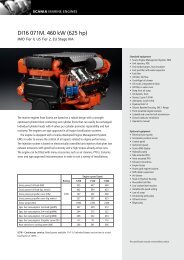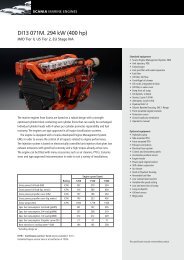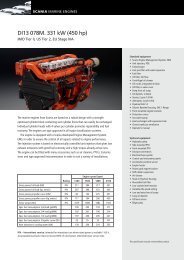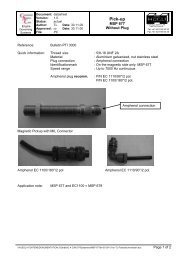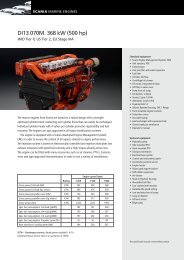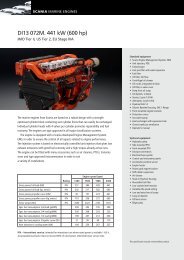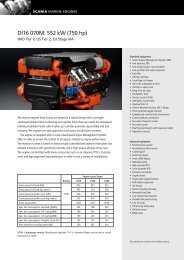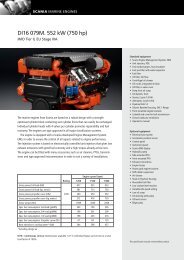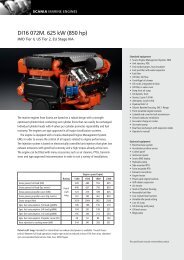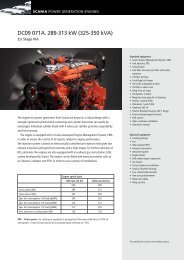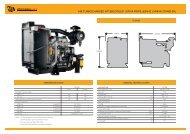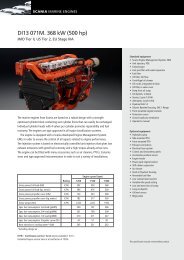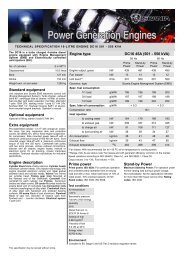CB126A Battery Charger - Huegli Tech
CB126A Battery Charger - Huegli Tech
CB126A Battery Charger - Huegli Tech
Create successful ePaper yourself
Turn your PDF publications into a flip-book with our unique Google optimized e-Paper software.
<strong>CB126A</strong> <strong>Battery</strong> <strong>Charger</strong><br />
<strong>Tech</strong>nical features<br />
The CB series is a “Switching technology” and<br />
“<strong>Battery</strong> Care philosophy”, since years parts of the<br />
core know-how at ADEL system, led to the<br />
development of this advanced multi-stage battery<br />
charging method, completely automatic and suited<br />
to meet the most advanced requirements of<br />
battery manufacturers. The <strong>Battery</strong> Care concept is<br />
base on algorithms that implement rapid and<br />
automatic charging, battery charge optimization<br />
during time, flat batteries recovery and real time<br />
diagnostic during installation and operation.<br />
� Input: Single-phase 115 � 230 Vac<br />
� Output: <strong>Battery</strong> charging 12 Vdc; 6 A<br />
� Suited for the following battery types: Open Lead<br />
Acid, Sealed Lead Acid, lead Gel and Ni-Cd<br />
(option)<br />
� Automatic diagnostic of battery status. Charging<br />
curve IUoUo, constant voltage and current<br />
� Switching technology, output voltage 14.4 Vdc<br />
Three charging levels: Boost, Trickle, Recovery.<br />
� Protected against short circuit, inverted polarity,<br />
over Load.<br />
� Signal output (contact free) for fault battery state<br />
� Protection degree IP20 - DIN rail<br />
The Real Time Auto-diagnostic system, monitoring<br />
battery faults such as, elements in short circuit,<br />
accidental reverse polarity connection,<br />
disconnection of the battery, they can easily be<br />
detected and removed by help of Blink Code of<br />
Diagnosis Led; during the installation and after sell.<br />
Each device is suited for all battery types, by<br />
means of jumpers it is possible setting predefined<br />
curves for Open Lead Acid, Sealed Lead Acid, Gel,<br />
Ni-Cd(option). They are programmed for two<br />
charging levels, boost and trickle. A rugged casing<br />
with bracket for DIN rail mounting provide IP20<br />
protection degree. They are extremely compact<br />
and cost-effective<br />
3020 V1.0 12.08.2010 Page 1 of 2
General Data<br />
Insulation voltage (In /Out) 3000 Vac<br />
Insulation voltage (In / PE) 1605 Vac<br />
Insulation voltage (Out / PE) 500 Vac<br />
Protection Class (EN/IEC 60529) IP20<br />
Protection class I, with PE<br />
connected<br />
Reliability: MTBF IEC 61709 > 300.000 h<br />
Pollution Degree Environment 2<br />
Connection Terminal Blocks screw Type 2,5mm(24–<br />
14AWG)<br />
Protection class (PE Connected) I, with PE<br />
Dimensions (w-h-d) 45x100x100 mm<br />
Weight 0.30 Kg approx<br />
Climatic Data<br />
Ambient temperature (operation) -25 ÷ +70°C<br />
De Rating Ta > 50°C - 2.5%(In) / °C<br />
Ambient temperature Storage -40 ÷ +85°C<br />
Humidity at 25 °C no condensation 95% to 25°C<br />
Cooling Auto Convention<br />
Norms and Certifications<br />
Conforming to:<br />
� IEC/EN 60335-2-29<br />
� EN60950/UL1950,Electrical safety<br />
� 89/336/EEC,EMC Directive<br />
� 2006/95/EC (Low Voltage)<br />
� DIN41773 (Charging cycle)<br />
� Emission: IEC 61000-6-4<br />
� Immunity: IEC 61000-6-2.CE<br />
Signal Output (free switch contact)<br />
Main or Backup Power Yes<br />
Low <strong>Battery</strong> Yes<br />
Fault <strong>Battery</strong> Yes<br />
Type of Signal Output Contact<br />
Max. current can be switched<br />
(EN60947.4.1):<br />
Max. DC1: 30 Vdc 1 A; AC1: 60 Vac 1A<br />
Min.1mA at 5 Vdc<br />
Input Data<br />
Resistive load<br />
Min. load<br />
Nominal Input Voltage (2 x Vac) 115 – 230<br />
Input Voltage range (Vac) 90 – 305<br />
Inrush Current (Vn and In Load) I2t � 11 A � 5 msec.<br />
Frequency 47 – 63 Hz �6%<br />
Input Current (115 – 230 Vac) 1 – 0.7 A<br />
Internal Fuse 4 A<br />
External Fuse (recommended) 10 A (MCB curve B)<br />
<strong>Battery</strong> Output (<strong>Battery</strong> Care)<br />
Boost charge (25 °C) (Typ. at In) 14.4 Vdc<br />
Max. time Bust Charge (tpy. At In) 15 h<br />
Min. time Bust Charge (tpy. At In) 70 min.<br />
Trickle charge (25 °C) (Typ. at In) 13.75 Vdc<br />
Jumper Configuration battery type 2.23;2,25;2,27;2,3;<br />
(V cell) Ni-Cd (optional)<br />
1,41–1,5 (20 elem.)<br />
Recovery Charge 2 – 7 Vdc<br />
Charging. Max Ibatt < 40°C (In) 6 A � 5%<br />
Charging. Max Ibatt > 40°C (In) 4 A<br />
Efficiency (50% of In) 81%<br />
Charging current limiting Iadj 20 ÷ 100 % / In<br />
Quiescent Current � 5 mA<br />
Charging Curve automatic: IUoUo 3 stage<br />
Detection of element in short circuit Yes<br />
Short-circuit protection) Yes<br />
Over Load protection Yes<br />
Over Voltage Output protection Yes<br />
Adjustable charging current (% In) 20 ÷ 100<br />
Charging<br />
An automatic multi-stage charging and real time diagnostic<br />
allow fast recharge and recovery of deep discharged batteries,<br />
adding value and reliability to the system hosting. Type of<br />
charging it is Voltages and current stabilized IUoUo. The state<br />
of charging battery and Auto-diagnosis of the systems are<br />
identified by a flashing code on a Diagnosis LED and Fault<br />
<strong>Battery</strong> LED:<br />
Charging<br />
Type<br />
Auto<br />
diagnosis<br />
Diagnosis <strong>Battery</strong><br />
State<br />
LED<br />
Fault LED<br />
Trickle 1 Blink/sec OFF<br />
Boost 2 Blink/sec OFF<br />
Recovery 5 Blink/sec OFF<br />
Reverse<br />
polarity<br />
1Blink ON<br />
<strong>Battery</strong> No<br />
connect<br />
2Blink ON<br />
Element in<br />
Short C.<br />
3Blink ON<br />
Replace<br />
<strong>Battery</strong><br />
5Blink ON<br />
3020 V1.0 12.08.2010 Page 2 of 2


